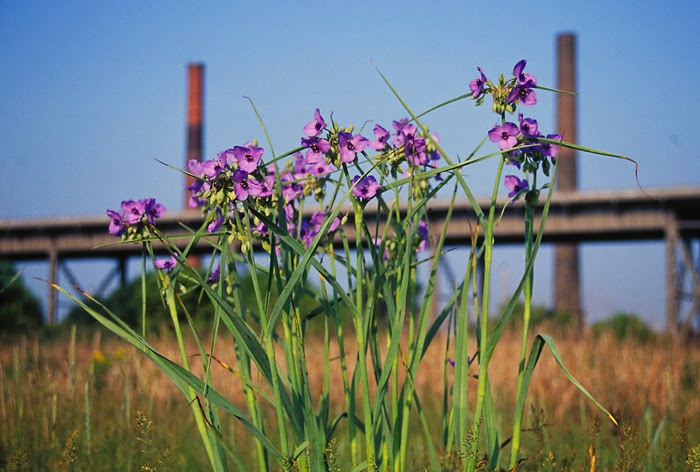I read a news article recently about a guy named Jesse
Welter who has started a tourist business in Detroit. He guides clients through
abandoned buildings because, apparently, there is a great demand to see the
devastation and decay of a once great city. (Welter works surreptitiously
because what he’s doing is both illegal and risky.) Detroit also has become a
mecca for photographers attracted to the opportunities it provides for
producing images of ruin and social upheaval. There is a book by two French photographers called, “The Ruins
of Detroit.”
Using ruins as an artistic motif has historical roots
tracing back at least to the Italian Renaissance, of course, when ancient
civilizations were unearthed and used as a springboard for modern
transformations of a medieval society. But what is being done in Detroit has been
dubbed “ruin porn” by residents who see it as exploiting the decay without
offering any solutions to the problems facing their community.
When I first began photographing the Menomonee Valley about
15 years ago, Milwaukee was often compared to Detroit and many thought our city
to be on the verge of slipping into a similar abyss. The Menomonee Valley, the
geographical center of the city, was also the epicenter of urban decay. We had
ruins, too, particularly at the west end of the Valley where the Milwaukee Road
once was the city’s largest employer. For a while, until they became unstable
and had to be torn down, the chimneys that were the last vestiges of those
ruins acquired value as monuments.
 |
| Chimneys, 2009 |
Although Milwaukee still has work to do, we have not
suffered Detroit’s fate. The story of Milwaukee diverged from that of Detroit
and one of the most important chapters in that story is the one about the
Menomonee Valley. Ever since white settlers drove out the indigenous
inhabitants, the history of the Valley has been one of repeated
transformations.
The verdant wild rice marsh became the locus of urban
expansion as the surrounding bluffs were torn down to fill it in. The Valley
became Milwaukee’s industrial core—“machine shop to the world.” By the late
Twentieth Century industry had moved on. The Valley had been abandoned,
blighted with pollution, and hollowed out, much like Detroit.
The Valley is now seeing its fourth major period of
transformation. This new transformation has been led, in no small measure, by
Menomonee Valley Partners (MVP), a non-profit organization created for the
purpose. While the revitalization of Milwaukee is part of a global trend of
urbanization, the story of the Menomonee Valley diverges, again, in important
ways. As in most cities, jobs and economic development are appropriately a
primary concern. But from its inception MVP has had a larger vision.
What first attracted me to the Valley weren’t the ruins. It
was the resurgent wildness that had grown up around them. Neglect, contamination
and blight had driven out the people and, ironically, made the valley once
again attractive to wildlife. In contrast to the first transformation of the
Valley, which filled the marshes, channeled the river and drove out wildlife,
the new vision for redevelopment has included restoration of the river and natural areas along with business development.
 |
| Spiderwort, ca. 2001 |
Instead of destroying natural habitats in the name of
progress, there is a new understanding that a sustainable future involves the
integration of the natural environment with human activity. The vision for the
Valley layers on a third component to economic development and ecological
rehabilitation: cultural revitalization. After all, what distinguish great
cities from merely dense population centers are their cultural assets. They are
places made vibrant by their histories, their recreational opportunities and by
the arts.
If Detroit is to be saved it won’t be because Jesse Welter
saw in it a business opportunity. It won’t be due to a flock of photographers
who descend on the city for a day or a week and leave with images, however
poignant and metaphorical. It will be the result of community efforts,
including the many artists who have taken up residence there and whose work is
about transformation and hope rather than decay and despair.
The latest chapter in the on-going story of the Menomonee
Valley is one of transformation and hope. It is a story worth telling. Stay
tuned.

The wide-ranging interview by Brecken Hancock covers beauty, editing, the political role of poetry, and much more. women’s sober living
ReplyDelete